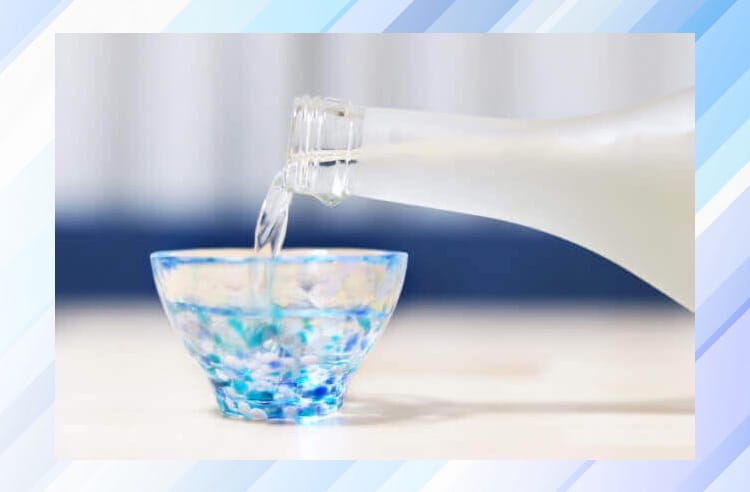
Water essential for sake brewing

Among the ingredients of sake,80% is waterAccounted for. Also,Water should be 30 to 50 times the total weight of rice used for sake brewingIt has been with. Water is the most important ingredient of sake along with rice.
The water used for sake brewing“Water for brewing”Call it. In many breweries,We use well water drawn from the basement of our own premises, river water flowing near, spring water, etc.. The most commonly usedwell wateris. There is little change in water temperature throughout the year, and it is characterized by being kept at the same temperature as the average annual temperature of the land, or higher by 1 to 2 ℃.
from long ago,“There is good liquor in good water”It is said that. Rice can be purchased, but it is impossible to move the well. That is why sake breweries from all over the country are located near water sources and rivers where good quality water can be obtained.
These waters are used after analysis of water quality and components by public institutions and through thorough inspection and management.To use it as brewing water, it is necessary to clear stricter standards than tap water.
Brewery water is mainly used during production"Water for brewing"And used for bottling"Water for bottling"It is roughly divided into two. Brewing water and bottled water are further subdivided according to their use.
[Brewing water]
- Washing rice, water for soaking = water for washing away dirt such as rice cakes adhering to the surface layer of rice and making the rice absorb water
- Feeding water = Water used with steamed rice and rice cake when preparing sake mothers and rice cakes
- Miscellaneous water = Water used for washing tanks and buckets and boilers
[Water for bottling]
- Water for washing bottles = Water for washing bottles
- Water for hydration adjustment = Water added to the original sake after brewing to adjust the alcohol content and flavor
- Miscellaneous water = Water used for washing tanks and buckets and boilers
It was written that water for hydration adjustment is added to adjust the alcohol content, but the current liquor tax law stipulates that “the alcohol content of sake should be less than 22”. It is sometimes used for
Among these 6 uses for brewing water, the most important isWater for brewing water.Since it is used directly when preparing sake mothers and mochi, it is an extremely large factor that determines the taste of sake.It can be said.
By the way, recently there are an increasing number of pubs that serve the sake used for the sake and sake specialty stores that sell them in bottles. If you see them, please try and compare the brewed water and the sake made with the brewed water together. You will see a new expression of the sake.
Water conditions suitable for sake brewing

So what kind of water is good for sake brewing?
・ Required ingredients
The main ingredients required for brewing water areMineral content such as "potassium" "magnesium" "phosphorus" "crawl".
These are indispensable for sake brewing such as Neisseria gonorrhoeae and yeastBecome a source of microbial nutrients and promote growthIt plays an important role. If these ingredients are not enough, it is so important that alcohol fermentation does not occur normally.
・ Unnecessary ingredients
The main ingredients that are most harmful to brewing water are:"Iron" and "Manganese"is. IronDeteriorates the appearance color by red, promotes oxidation, and produces an unpleasant flavorIt becomes a factor. It is ideal for brewing water that contains almost no iron.
On the other hand, manganeseFacilitates coloring by ultraviolet raysIt will cause. In addition, heavy metals are components that are avoided because they are harmful to the human body.
-Which is better, alkaline or acidic?
Whether the food is acidic,The pH value (a numerical value indicating the degree of acidity or alkalinity) determines whether it is alkaline..
The pH is scaled from 0 to 14 between acidic and alkaline, and the degree of acidity and alkalinity is indicated by the number on the scale. The intermediate number is pH7, which is neutral.
The smaller the value than pH7, the stronger the acidic property, and the larger the value, the stronger the alkaline property. The pH value of water suitable for brewing water is6 to 8 are suitableIt is said that.
However, even if pH8 weak alkaline water is used at the stage of preparation,Since sake changes to acidic when fermented, it is categorized as acidic food.. The average pH value of sake is4.2 to 4.7It is said that.
Difference between hard water and soft water

One of the things that greatly affects the taste of sake is water"hardness"Is mentioned. What is hardness?An indicator of the total content of calcium and magnesium in water.
What contains a lot of calcium and magnesiumhard water, LessSoft waterEur-lex.europa.eu eur-lex.europa.eu
For classification of soft water and hard water, the World Health Organization (WHO) standard (American standard) is mainly used.
According to that standard,
Soft water: 0 to less than 60mg / L
Medium hard water: 60 to less than 120mg / L
Hard water: 120 to less than 180mg / L
Very hard water: 180mg / L or more
It has been with.
Most of the water collected in Europe and America is hard,Japan's water tends to be soft in the world. Most of the water is soft to medium hard, and the average hardness is about 50 to 60..
The reason why Japanese water is difficult to contain mineral componentsBecause the country is small, the river is short and the time to stay underground is short.It is mentioned. In addition, there are many rainfalls (Japan's rainfall is nearly 2 times the world average) and volcanic ash soil.
When making sakeWhether to use hard water or soft water will greatly affect the taste..
If hard water is used, it is a nutrient source for yeastHigh mineral contentTherefore, the fermentation of alcohol is activated. for that reason,It becomes easy to obtain high alcohol contentIt is. Also,Easily finished in a strong and rich dry type of sakeIt is also a feature. In addition, it is said to be liquor that can withstand long-term aging.
In contrast, when soft water is used,Low mineral contentBecause of this, the fermentation of alcohol will be slow. for that reason,Alcohol content tends to be lowIt is. Also,Finished in a refreshing type of sake with gentle sweetness and mellow flavor tends to be.
Sakai's “Miyamizu”

The Sakai region is the area that boasts the highest national sake production volume. What is Sakai region?In the liquor industry, approximately 12km of coastal area facing Osaka Bay from the eastern part of Kobe City to Imazu in Nishinomiya CityRefers to that.
The main reason why the Sakai region became Japan's largest liquor"Miyamizu"The presence of. “Miyamizu” is an abbreviation for “Nishinomiya Water”. MiyamizuIt is underground water of several rivers that originate from Mt. Rokko, and is rich in phosphorus and magnesium.. Unusual in Japan with lots of soft waterHigh hardness and close to the level of hard waterIs the feature.
This is because the area where Miyamizu springs is granite,Impurities are removed by the filtration effect of shellfish, and it contains moderate potassium because it is close to the sea.As a result, it became water suitable for sake brewing, and the sake brewing industry flourished.
The effect of this Miyamizu water dates back to the Tenno 11 year of the Edo period. Miyamizu was discovered by Yamamura Tazaemon, the sixth-generation owner of a sake brewery called “Masamune Masamune”. At that time, the Yamabuchi family made sake in Nishinomiyago and Uozakigo, but always noticed that the quality of sake in Nishinomiyago was higher. Even if you use the same rice or replace Mr. Tsuji, the superiority of Nishinomiyago did not change at all.
Therefore, Taemon, who thought that the cause might be the feed water, brought the Umekikura well water from Nishinomiyago to Uozakigo and used it, and the same sake as Nishinomiya sake was produced. . Because this liquor was not weakened even if it was loaded onto a ship and transported to Edo,"Drinking sake"As a result, it became very popular in Edo, and the water of Nishinomiya was used not only for the sake but also for sake breweries in other areas.
This liquor that is dry and dry`` Men's sake ''Was called.
"Fushimi water" in Kyoto
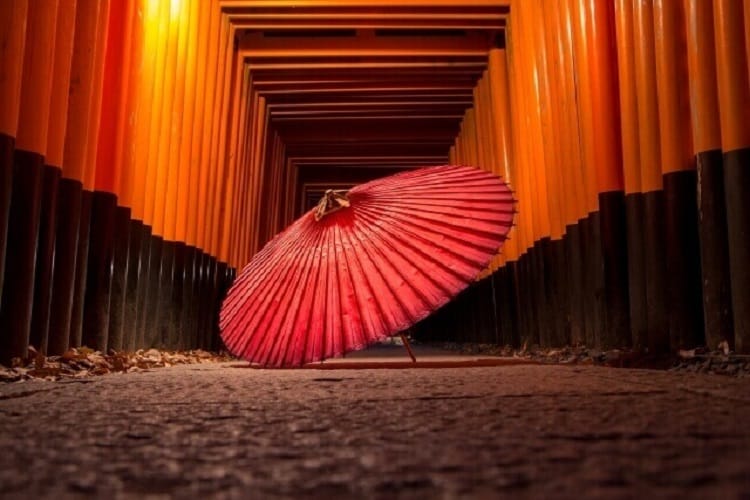
Fushimi Ward in Kyoto is an area where abundant groundwater can be collected, and sake brewing has become popular since the Edo period.
Because "Fushimi" was once written as "Fushimi"Blessed with good quality groundwater since ancient timesI understand this.
This Fushimi waterDue to its low hardness compared to Miyamizu, it is mellow and gentle, and it is finished in liquor with a soft and soft taste.There is a tendency. From the impression of its taste,"Fushimi woman's sake"It was called
Soft water brewing method in Hiroshima
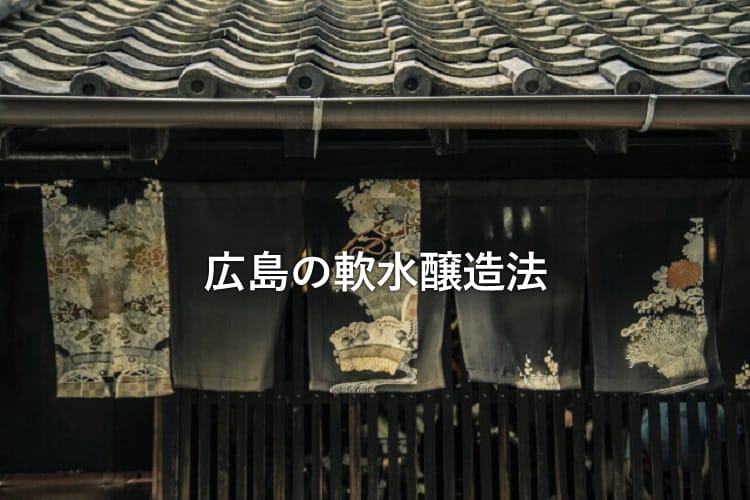
Hiroshima is an area with a strong tendency for soft water in Japan.Hardness is around 30is. Currently, sake brewing technology has been greatly improved, and high quality sake brewing can be done safely even in soft water where fermentation is difficult to proceed.In the past, when soft water was used, it was easy to become a bad liquor that was sweet and did not last longIt is
Sensaburo Miura, a brewer in Hiroshima Prefecture Akitsu, succeeded in eradicating the disadvantages of soft water, developed in the Meiji 20 era."Soft water brewing method".
This brewing method, which matches the water in Hiroshima, promotes the saccharification of rice by making high-quality koji firmly.By slowly fermenting with plenty of time, it became possible to create high-quality sake with a fine texture and high aroma.It is
With this technology, the sake of Hiroshima Prefecture received a higher evaluation than the sake of Sakai and Fushimi at the National Sake Review Conference held in the late Meiji era.Win the highest awardThe achievement was achieved. It was decided to make it known nationwide. In this way, Hiroshima Prefecture was established as a famous brewing area alongside Sakai and Fushimi.
Niigata's fresh dryness is a gift of soft water

Niigata Prefecture boasts the highest production volume in the country after Hyogo and Kyoto. Speaking of keywords that describe the characteristics of Niigata sake,"Tail dry".
There was an era when the crisp dryness became a big boom, but it was the fire that sparked the movement.Niigata sakeSuch you.
There are many reasons why Niigata Prefecture's sake has a strong tendency to dry, but one of them is in water.
The water in Niigata Prefecture is the water that melted out of the high mountains of Echigo, flowing out as spring water.Mostly soft water with low mineral content.
The average water hardness in Japan is about 50 to 60, but the average value of brewing water in Niigata Prefecture is about 40.It is said that. If you use soft water, the fermentation of alcohol will be moderate, but in Niigata Prefecture, where winter cold is particularly severe, the fermentation will be even slower.
for that reason,Clear and clean sake with a fine tasteThat's why.
The number of sake breweries is about 90, which is No. 1 in the country, and one of the best sake consumption in the country.
Representative brands of sake with hard water and soft water
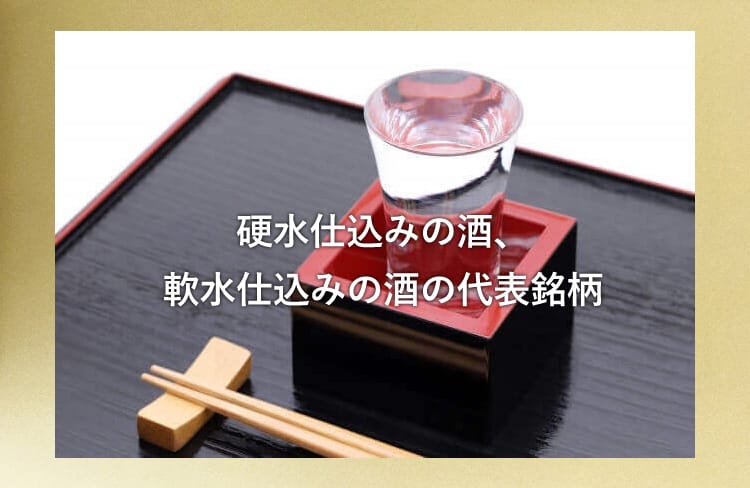
I wrote that most of the water collected in Japan is from soft water to medium hard water, but there are some sake breweries that use a few hard waters for sake brewing.
A sake brewery that should be called its representative“Yucho Sake Brewery” (Gosho City, Nara Prefecture)is. Yunacho Shuzo's feed water is deep groundwater from the Kongo Katsuragi system.
This water pumped up from the underground 100m by two wells in the brewery premises,"Super" hard water with a hardness of at least 214mg / L. MoreoverContains almost no iron or manganeseIt is said that the water quality is perfect for sake brewing.
It is this water that forms the framework of Sekiyu Sake Brewery and is made into a refined sake-quality sake. Representative brands are“Wind Forest” “ALPFA Wind Forest” “Takacho”.
“Izumihashi Shuzo” (Ebina City, Kanagawa Prefecture) is also famous for its hard water. Izumihashi Sake Brewery's water is the underground water of the Tanzawa Mountains that was drawn from the underground 100m within the brewery's premises.
Hardness is130 to 140mg / L. It is harder than the mineral water “Volvic” (about 62mg / L), which is familiar in Japan.
The sake brewed with this hard waterA sense of sweetness, a tight, firm taste, and a weight remaining on the tongue after drinkingI remember. Representative brands are"Izumi Bridge" and "Tombo Label".
“Mitobe Sake Brewery” (Tendo City, Yamagata Prefecture) also uses water with hardness similar to that of Izumibashi Sake Brewery. This Mitobe Sake Brewery uses underground water from the Ouyama system as the feed water. The hardness of the water isAbout 120mg / L.
The sake brewed with this waterA crisp taste characterized by a sharp and hard finish that is expressed as “the sharpness of the sword”Finished. Representative brands are"Masamune Yamagata".
Sake made with these hard waters seems to be favored by those who are familiar with European wines. It seems that the aftertaste is refreshing and delicious. This may not be unrelated to the fact that European water has a lot of hard water.
On the other hand, there are some sake breweries that use soft water for water. The representative isMorohashi Brewery (Nagaoka City, Niigata Prefecture).
Morohashi Brewery uses two types of water, one of which is designated by the Environment Agency as one of the top 100 famous waters in Japan.“Shimizu in the Forest of the Forest”.
The other is that it is rare even in the whole country that is pumped up from the well in the brewery's premises.Super soft water with hardness 0.47It is. Among Niigata Prefecture, which is known for its overwhelmingly soft water, sake made with ultra-soft water with a low mineral content,The taste is soft and the finish is elegant and mellow..
The representative brand was named after Kagetoraga Nagao, the former clothing name of Kenshin Uesugi, who was also called “Echigo no Tora”, a warrior who was deeply related to this land."Keino Koshino",in addition`` Premium water preparation ''.
Shinshu Meiko (Ueda City, Nagano Prefecture) is also famous as one of Japan's leading sake breweries. The water hardness used by Shinshu Meijo is0.95is. This water is named after the area where black meteorite is produced."Kokuyo water"It is called.
There are many people who come to ask for this black agate water filtered from the bedrock of black agate stone that has the ability to sterilize and produce delicious water. It has been said that ultra-soft water is not suitable for sake brewing because it is difficult to grow yeast for alcohol fermentation.
However, there is a reason why Shinshu Meijo used it as feed water. that is,Because the water of black persimmon has the power to bring out the scent and taste of materials.
By using this water, which has a very low mineral content and has the effect of extracting umami,The original characteristics of rice and rice bran are alive, and you can brew sake with a full flavor.It is. Representative brands are"Ashizawa" "Kikumori Hidemine" "Kikumori Aimemine".
A typical example of a sake brewery
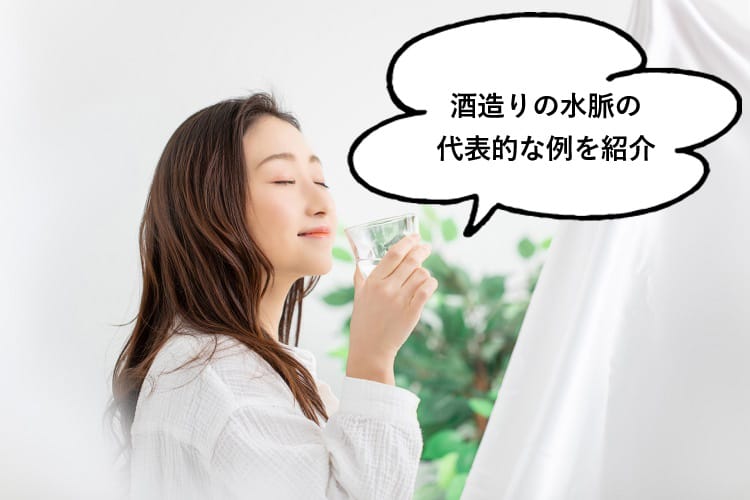
"There is a famous water, there is a sake". Sake breweries that make high-quality sake are gathered in the same area, but one of the main reasons is thatName water.
The mountain acts as a natural septic tank and is also a huge water tank. In particular, large mountains that exceed 1000m above sea level also have a wide base, and abundant neat spring water is collected around them. Because such water is under strong pressure,Meticulousis. AlsoA wide variety of mineral minerals are dissolved in the form of ions, making it suitable for use in sake brewing.It is
Below are some typical examples of sake brewery.
・ Asahidake (2291m)
Asahidake is the highest peak of the Daisetsuzan Mountains, which consists of 2000m-class mountains in central Hokkaido.
The snow melts and the water soaks into the ground,The taste that has been polished for decades and hundreds of years, and the water that springs from the basement is neat and cleanis. “Dayuki Asahidake source water” has been selected as one of the “Heisei 100 famous waters”.
・ Hakkaisan (1778m)
Hakkaisan, located in the Chuetsu region of Niigata Prefecture, is a famous mountain called Echigo Sanzan along with Nakanotake and Echigo-Komagatake. It has been known as a sacred mountain since long ago and has been the subject of mountain worship.
Even today, many believers wore white robes.“Raiden no Mizu”, “Osaki Takiya Shimizu”, “Kongo Reisen”It is also famous for many well-known springs.
Has a popular brand "Hakkaisan"Niigata Prefecture's famous brewery “Hakkai Brewery” uses this “Raiden-like water” for all sake brewing.. This area is known as the famous heavy snowfall area.
The water that has fallen on the Hakkaisan during a severe and long winter melts and penetrates deep into the ground, and this water that springs from the rocks after a long time,Exactly. The softness of the mouth is outstanding. It was designated as a famous water in Niigata Prefecture in 1986.
・ Oyama (1709m)
Daisen towering over Shimane Prefecture boasts the highest peak in the Chugoku region. The great waters of Daisen are largely related to the existence of beech forests.
Do you know the word “forest recharge”? Beech trees are said to have 20 million to 30 million leaves. The leaves fall to the ground and become humus.With its high water-holding power, which can be said to be a natural sponge, it can store plenty of snowmelt and rainwater..
After decades, the water that springs back to the surface againContains outstanding nutrientsIt is. Natural water from bottles of mineral water from major beverage manufacturers is also collected at the foot of Oyama.
・ Hakusan (2702m)
Hakusan, which spans Hakusan City in Ishikawa Prefecture and Shirakawa Village in Gifu Prefecture, is known as one of Japan's three famous mountains (Japan's three sacred peaks) along with Mt. Fuji.
A large amount of snowmelt flowing from the top of the mountainIt soaks into the soil of the forest, slowly passing through the basement and gradually flowing out while accumulating abundant minerals. It is also the source of the 4 water system of the Tetori River (Ishikawa Prefecture), Kuzuryu River (Fukui Prefecture), Nagara River (Gifu Prefecture), and Shogawa (Toyama Prefecture).
